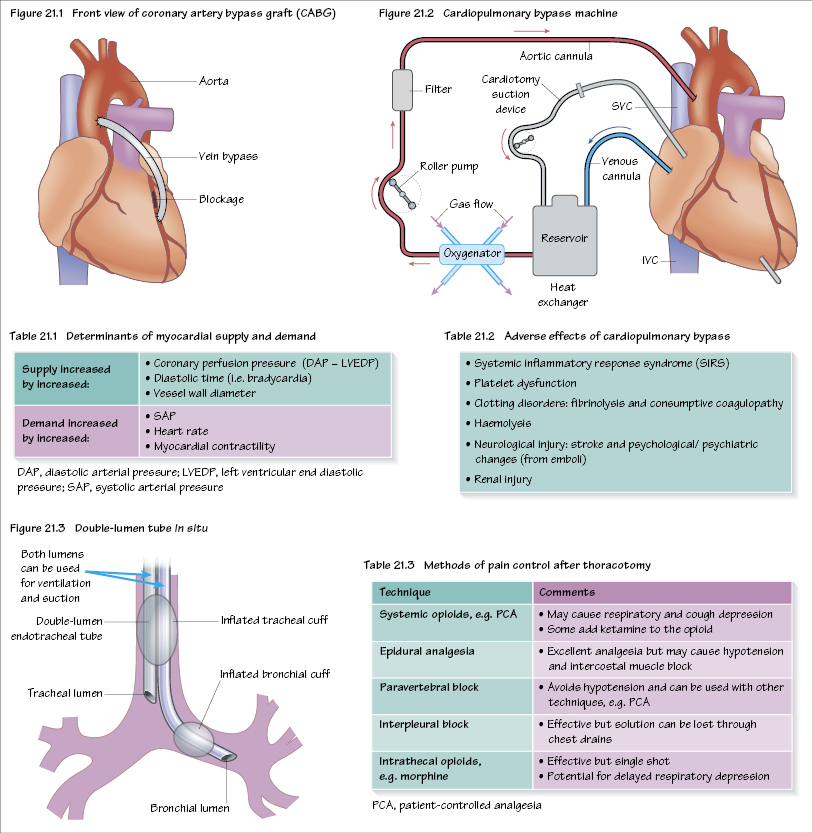21
Cardiac and thoracic anaesthesia

Cardiac anaesthesia
The majority of cardiac anaesthesia involves anaesthetizing for either coronary artery bypass surgery or valve replacement. Coronary disease is the major cause of death in the western world. In general, patients with symptomatic disease may undergo pharmacological treatment or have the atheroma within the coronary arteries managed by cardiologists (percutaneous coronary intervention [PCI]), with angioplasty (with or without stents) or undergo open surgery (coronary artery bypass graft [CABG] surgery; Figure 21.1).
Preoperative preparation
Patients undergoing open heart surgery will have had extensive preoperative investigations for major surgery. In particular, echocardiography and left heart catheterization provides information about coronary anatomy, ventricular function and valve gradients.
Peroperative management
Patients undergoing major cardiac surgery will generally have a sedative premedication and have central venous and arterial lines inserted under local anaesthesia prior to induction with full haemodynamic monitoring. Haemodynamic stability is paramount to prevent a rise or fall in blood pressure, both of which may precipitate cardiac ischaemia. The determinants of myocardial blood supply and demand are shown in Table 21.1.
Many patients undergoing cardiac surgery require cardiopulmonary bypass (CPB; Figure 21.2) whereby blood is drained from the venous circulation in large tubes to the CPB machine, where it is oxygenated (via a membrane oxygenator) and pressurized (by means of a roller pump or centrifugal pump) and returned to the aorta. During this time ventilation of the lungs is not required. This process permits the surgeon to operate on a still, bloodless heart. Prior to CPB the patient is anticoagulated with heparin. The patient is cooled to reduce metabolic rate and minimize cardiac (and other organ) damage. When undergoing cardiopulmonary bypass, careful monitoring of coagulation and acid–base balance and an intravenous anaesthetic technique is required.
Once surgery is complete the patient is rewarmed and the heart is restarted. Discontinuation of CPB occurs by diverting more of th/>
Stay updated, free dental videos. Join our Telegram channel

VIDEdental - Online dental courses


